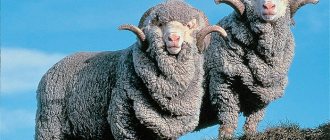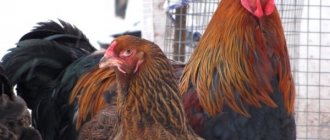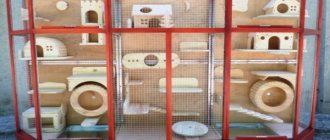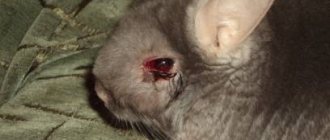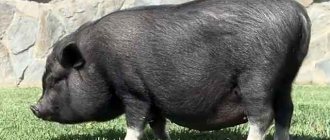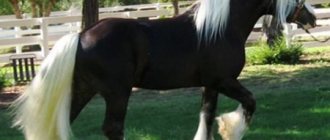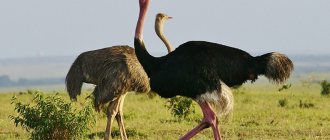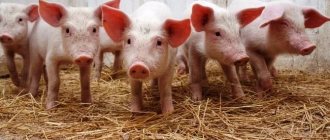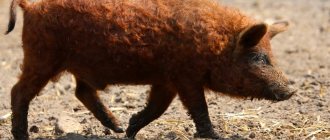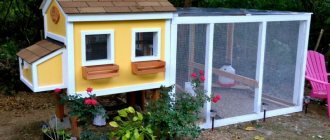Fur is the most traditional and ancient material in the history of clothing. Primitive people began to use it. And today fur has firmly entered our lives. Fur products can be seen in the wardrobe of every fashionista. It must be said that in the modern world, fur has ceased to be a symbol of luxury, but it still has a high cost. Therefore, people who breed fur animals are always “in chocolate.” But you need to understand that this business is quite labor-intensive and has its own nuances.
Reconomica decided to find out more about the fur business. We talked with the owner of the chinchilla farm. The woman shared her story of opening this business, talked about the peculiarities of chinchilla breeding and did not even hide information about her income.
Who are chinchillas?
Chinchillas are large rodents with valuable fur that naturally live in South America in high desert areas. They have large round ears, black eyes and long mustaches. The animals are nocturnal and feed on grass and insects.
As a result of mass catching, the chinchilla population has declined catastrophically, and they are listed in the Red Book. Long-tailed chinchillas, about half a meter long (including the tail), are bred under artificial conditions.
Chinchilla fur is usually gray-blue in color, very thick and dense. It protects the animals’ bodies from hypothermia at an altitude of 4-5 km above sea level, and is not afraid of any parasites. Chinchillas do not sweat or smell; to clean their fur, they bathe in sand and dust.
Life expectancy in captivity is up to 20 years. Adults weigh 600–800 grams, newborn cubs weigh 30–70 grams. Young females give birth to 1-2 cubs; with age, the litter increases to 5-6 babies.
The name Chinchilla comes from the Peruvian province of Chincha.
Difficulties and their solutions
The chinchilla is a very clean animal and demanding in care, food and maintenance. Here are a few difficulties that you may encounter, and in parentheses the solution to the problem.
- Animals take a long time to adapt , they are afraid of people (the first 10 days they get used to new conditions, this is a normal phenomenon. You just need to provide them with water, food and dim the lights . Leave them alone while they adapt);
- They eat poorly and do not grow (perhaps compound feed is not suitable for them, give more hay and change the food to another. Buy a specialized grain mixture for chinchillas );
- The mating is unsuccessful (this means that the chinchilla has not yet grown to childbearing age. And if you do not understand when a chinchilla comes into heat, give the boy access to all chinchillas . He will run around the cages and fertilize all the chinchillas that come into heat);
- Puppies die (lack of milk from the mother; when 4 puppies are born, some of them are born weak or underdeveloped, this is considered normal. And if puppies die in all chinchillas at about the same time, there is a risk that there is an infection on your farm. B In this case , all chinchillas need to be transplanted and the cells must be thoroughly disinfected and the sawdust changed );
There seem to be few difficulties, but they exist, and they need to be solved as necessary.
We advise you to read: How to earn 1,000,000 rubles on your own land in a village where there is no work.
Industrial value
Chinchillas have been bred for fur, meat and offspring since the beginning of the 20th century, when Americans, with the permission of the Chilean government, took several specimens to California and adapted them to life in different climatic conditions.
Fur products are very expensive due to the unique characteristics and small size of the skins - about a hundred pieces are required to make one fur coat. The cost of chinchilla clothing is tens of thousands of dollars. In Europe, the chinchilla business is already well developed and almost all production is carried out for sale at the Copenhagen Fur Auction.
Chinchilla meat is used as a dietary food for tuberculosis, sclerosis and cancer. It is readily purchased by restaurants specializing in exotic cuisine.
Chinchillas are kept as pets in the same way as hamsters or guinea pigs. They are unpretentious, very pleasant to the touch, and have a pronounced character.
You can start a chinchilla breeding business with a few individuals and gradually increase the volume. The animals do not require special care, do not take up much space, do not scream or stink, so it is quite possible to create a mini-farm at home.
You can download a free chinchilla breeding business plan here.
Remember
- It is worth buying only breeding individuals.
- Before purchasing animals, create the conditions they need.
- Carefully study the composition of the feed, or better yet, prepare it yourself.
- Don't skimp on veterinarian services.
- Pay attention to advertising.
To reduce them to a minimum, create a detailed business plan or use ours. And remember - your own farm can please you not only with an abundance of beautiful fluffies, but also with a stable, ever-growing income!
(
3 ratings, average: 5.00 out of 5)
Breeding technology
In nature, chinchillas feel normal at temperatures up to +40°C, but for comfortable keeping in captivity you need to create the following conditions for them:
- humidity about 50%;
- temperature from +18°С to +20°С;
- room lighting at the rate of 60 W per 10 sq. m.;
- lack of direct sunlight;
- absence of drafts;
- clean water for drinking;
- sand bath for bathing;
- daily cleaning;
- weekly change of bedding in the cage;
- monthly sand change;
- disinfection of the premises once every 6 months.
On an area of 1 sq. m. can accommodate up to 3 individuals. Usually there is 1 male for 1 female, but it is also possible to form a family of 1 male and several females. Chinchillas begin to reproduce at the age of 7 months; they produce 2-3 litters per year, 1-2 cubs in each.
For example, a population of 2 males and 10 females can increase to 70 individuals after 12 months. The gender split is approximately equal. All the healthiest and most beautiful females remain on the farm for breeding. The best specimens are also selected from males, but in much smaller quantities. The remaining animals are sold to pet stores. With age, the litter of females increases to 5-6 individuals, and the herd grows faster.
Thus, in a couple of years, the animals will multiply to 300-350 individuals, and then you can start selling fur and meat.
My farm is still thriving today.
Today my business does not stand still. It moves in the right direction and only goes up. Now I have 400 adult chinchillas. I sell only 600 puppies to my sister for 3,000 rubles each and found another sales place in Omsk, where I sell puppies for 4,000 rubles each.
Now my annual earnings are 4,200,000. If we divide this earnings by 12 months, then my monthly salary is 350,000.
Chinchilla farm.
Some businessmen earn more, but I am a businesswoman who never aspired to have millions, but it just happened that way.
Also read: One eco-fur coat saves 200 chinchillas, or beauty does not always require sacrifice.
Equipment
Chinchillas are kept indoors in iron mesh cages 40-45 cm high. On the front wall there is a door, feeders and drinkers. A shelf for resting is attached to the back in the middle; the bottom is lined with pine sawdust. The cages are placed one on top of the other in several tiers and several rows in such a way that animals raised for different purposes are located separately:
- For fur, meat or tribe.
- Increase in livestock.
In addition to cells, you also need to purchase:
- feeders;
- drinking bowls;
- baths for bathing;
- pallets for sawdust;
- heater;
- air conditioner.
All equipment that comes into contact with chinchillas should not be made of wood, since these animals are rodents with very sharp front incisors. The exception is the breeding period, when a box for the young is placed in the cage.
How to breed chinchillas for sale - detailed instructions
Anyone can organize their own profitable business with chinchillas. This does not require any serious investment in equipment or special education. All you need is a small, ventilated and warm room for a nursery (it’s possible to breed the first generations even in an apartment), farm cages and a good breeding stock.
Breeding chinchilla
For your information! Individuals with 12 or more points according to the Royal system are usually considered breeding.
Where to start, and what steps to take on the path to your success?
Step 1. Draw up a business plan
To open your first farm, you will need a relatively small room, about 1 square meter per 10 individuals (the cells are placed in several tiers on top of each other). We also need a utility room to store feed and care equipment. Don’t despair: utility bills will be minimal, because heating and lighting are needed at low levels. Our children eat dry food (it is advisable to purchase special food) and good quality hay. And let's not forget about the good bedding and staff. We carry out disinfection twice a year.
For those who do not want to delve into mathematical calculations, but want to find out how much they can earn and understand whether it will be profitable for them to breed chinchillas, we offer a ready-made business plan.
Step 2. Set up a place for breeding animals
Before you start buying individuals, you need to properly prepare and arrange a place to keep them.
Advice! In order not to run randomly throughout the farm, immediately think about how best (ergonomically) to arrange the cages.
This video will help you understand the cell structure:
The premises in which you plan to keep pets must meet the following requirements:
- Have sufficient lighting, but without direct sunlight (lamp) rays.
- Receive a constant flow of fresh air, but without drafts.
- Have humidity within 50-70%.
- The internal temperature should be 8-18°C.
- Have good sound insulation.
Special conditions are created for growing chinchillas indoors
Step 3. Buy animals and food
For successful breeding, and subsequently quick marketing, experienced farmers purchase breeding animals.
Visually they should be:
- healthy;
- active;
- young;
- with thick fur of the desired color (fur of dark tones is especially valued on the international market).
The nutrition of our clients deserves special attention. In the wild, the diet of rodents is not particularly diverse. They eat cereals and legumes, young shoots, moss and bark.
Important! Chinchillas have a very demanding digestive system. Therefore, unfamiliar foods can harm their health.
If you are afraid to create a diet yourself, buy ready-made industrial feed. They are developed taking into account all the needs of furry ones and contain key ingredients and trace elements.
Step 4. Register a business
For our business to be legal, it must be registered. Beginners can register a personal subsidiary plot and thus avoid tax deductions (except for land taxes). Gradually increasing sales, switch to individual entrepreneur status. To do this, we register with the Federal Tax Service and choose the type of taxation that is beneficial for us - the Unified National Economic Tax with a 6% rate of net income.
In our case, no special licenses or permits are needed; only 2 documents are required:
- certifying ownership of the farm;
- registration sheet from the local veterinary service.
Step 5. Advertise finished products and look for sales routes
The growth and expansion of production requires the search for new markets. After all, local restaurants and companies engaged in tanning skins will most likely no longer be able to cover our growing volumes with their purchases. We will have to look for new ways of sales.
Advertising will help with this:
- external (billboards, bulletin boards, etc.);
- Internet (specialized communities and forums);
- Mass media (local and regional publications on agricultural topics);
- TV (on channels about business and farming).
Idea! Do you want to quickly find those who buy both furs and meat? Operate through trading platforms such as OLKH.
Acquisition
The most important part of the business plan is the acquisition of the first animals. For a novice entrepreneur, it will be enough to purchase 10 females and 2 males. This will save costs on starting the project and will allow you to understand the nuances of chinchilla breeding without significant risk.
Healthy purebred specimens of popular coloring cost 6,000 rubles. – 9,000 rub. There are a dozen basic colors of chinchillas:
- White Wilson - very light fur all over the skin and black eyes.
- White velvet - the gray muzzle and paws stand out against a white background.
- White-pink is a slightly darker color than Wilson's White, with pink eyes.
- Beige - has several varieties, from dark to light, with pale eyes.
- Sapphire - light fur with a soft blue tint. This coloration is very difficult to obtain, and the animals subsequently require increased care.
- Purple is the main color closer to gray, with a slight tint.
- The standard color is the natural appearance of chinchillas: dark ash back and light belly.
- Black velvet (corduroy) - black top with a smooth transition to a light bottom, beige nose and black eyes.
- Ebony - varies from dark gray to completely black.
In addition, there are various shades obtained by combining basic ones or as a result of mutations. The most popular are chinchillas with standard coloring or black and velvet.
When choosing adult animals (7-8 months old), you need to pay attention to the following points:
- correct rounded head shape;
- short rounded ears;
- there is practically no neck;
- smooth back without visible thickenings;
- dense and elastic fur, thick over the entire surface of the body;
- weight approximately 600 grams;
- healthy, beautiful producers.
It is best to purchase chinchillas from farms that have been breeding animals for a long time. In a serious farm, management will provide a veterinary certificate and advise on maintenance and care.
Chinchillas naturally have strong immunity and do not need to be vaccinated.
Possible risks
Any business has its downsides and pitfalls. Chinchilla is no exception.
Let's consider the main risks that may arise on the path to success:
- Diseases. Although the risk of disease in the entire livestock is relatively small (chinchillas have strong immunity), there is always a danger of an epidemic due to errors in care and feeding.
- Poor quality young stock. There are many offers on the market for the sale of fluffy animals. Their prices range from $50 and up. And here lies the catch: it’s quite difficult to find quality specimens in Russia. And little-known farms offer animals that, despite their poor pedigree, are strongly reminiscent of breeding animals in appearance.
- Selection of feed. Nutrient mixtures offered by domestic manufacturers are not always of high quality: rabbit food is often sold under the guise of chinchilla food. Therefore, you will have to either supplement it with additives yourself, or buy expensive imported ones.
- Implementation. If you have not thought through in advance where you will sell the offspring, then problems with sales will arise immediately after the appearance of the first offspring.
Nutrition
Chinchillas are fed once a day in the evening, as they are nocturnal. The basis of the diet is balanced granulated food. Additionally, herbs are introduced - fresh and dried, apples, carrots. To maintain immunity and compensate for the lack of fresh air, it is necessary to give vitamin complexes weekly.
An adult animal eats about 50 g of food per day. However, it is necessary to take into account the rather large difference in the weight of animals depending on gender, species and age. Therefore, it is necessary to adjust the dosage for specific individuals.
Particular attention should be paid to the nutrition of pregnant females and young animals. For the first one and a half to two months, the cubs are fed with milk, then they are removed from the mother into a separate cage and given regular food. It is extremely undesirable to change anything in the diet of females and young individuals, as they react sharply to new foods.
Chinchillas: care and maintenance at home
Animals do not like drafts, preferring silence and not too bright light. Ventilation must be provided in the room; it is recommended to install a heater to regulate the temperature.
Chinchillas are nocturnal animals, this should be taken into account by those who plan to keep them in an apartment. It is better to carry out all care and feeding procedures in the afternoon, when the pets’ activity increases. It is better not to disturb them during the day.
The floor in the cages is covered with shavings, hay or sawdust; the bedding should be changed 2-3 times a week. Once a month, it is recommended to disinfect the cages and thoroughly clean the drinkers and feeders. A complete processing of the inventory is also done before introducing new animals into the vacated cages.
Animals need to be fed once a day, in the evening, when chinchillas’ activity increases. The basis of the diet is hay and mixed feed. Combined feeds are purchased ready-made or mixed independently.
The nutritional mixture includes whole or crushed grains (barley, wheat, corn), beans, peas and other legumes, pumpkin and sunflower seeds, pieces of raw carrots and dried fruits. You can supplement the menu with fresh herbs: sprouted oats, green salad, young nettle or dandelion leaves.
Food for chinchillas must be fresh and of high quality, free from mold and foreign matter. Proper feeding is the key to good health and excellent wool quality. Animals should always have clean water available at all times, which must be changed frequently. It is not recommended to give chinchillas cold water; it should be at room temperature.
A bath of clean, sifted sand is placed in each cage. Chinchillas bathe in it daily to clean their fur. For teething purposes, provide the animals with tree branches and chalk stones, which will replenish the mineral deficiency.
Chinchillas breed 2-3 times a year, the female gives birth to 3 to 5 cubs. Newborn animals feed on mother's milk, and at the age of 7 weeks they become completely independent. Females can be left to renew and replenish the herd; males are usually slaughtered or sold to wholesale buyers.
How profitable it is to breed ostriches at home and how to properly keep these birds in the winter, you can find out here.
Inbreeding of chinchillas is prohibited. From time to time you will have to purchase males from outside to make the livestock stronger and healthier. Some nurseries that sell chinchillas for breeding offer a service for periodically replacing males.
How to sell raised chinchillas?
The subtleties of chinchilla sales
Chinchillas are sold to wholesale buyers; addresses can be found on the Internet. Many breeders continue to cooperate with the nurseries from which they received young stock. Chinchillas can also be sold as pets.
To do this, it is recommended to register on thematic forums or create your own website. The more potential buyers know about your nursery, the better.
Another popular option is cooperation with pet stores. Funny and compact animals are readily bought or sold.
Mini-farm registration
At the initial stage, there is no need to officially register a chinchilla business, since it will take about six months to raise the first litter, from which several individuals can be sold.
Before implementation, you need to choose one of the registration options:
- Individual entrepreneur. Suitable for a single business owner.
- Farming. Relatives can participate in the enterprise, but for this it is necessary to draw up an agreement.
To pay taxes, it is most profitable to choose a single agricultural tax at a rate of 6% of profit.
No license or other permits are required to raise chinchillas. It is necessary to register with the veterinary service.
Sales organization
The mini-farm begins to receive income from the very first offspring of purchased breeding animals. Individuals that are unsuitable for breeding or have poor quality fur are sold through pet stores or markets to be kept as pets.
Animals that meet all standards remain on the farm for breeding or are sold to other farms. The cost of breeding chinchillas is much higher than culled ones.
To sell chinchillas for fur, you need to have 400-500 individuals in stock. The skins are harvested mainly from male animals. Consumers are fur factories and studios in large cities. The cost of high-quality skins can reach 10,000 rubles.
Chinchilla meat is purchased by restaurants as an exotic and dietary product.
With high production volumes, it is advisable to open your own workshop for sewing fur products.
Until there are enough positive reviews about the farm, you can promote your chinchilla business using conventional advertising means:
- advertise in the press and on the Internet;
- place business cards and brochures in pet stores in the city;
- join a specialized online community, invite those interested on excursions;
- create a website;
- take part in zoo exhibitions.
Chinchilla breeding business – is it really possible to make money from it?
Making money from chinchillas primarily involves the production of valuable fur. In terms of cost, it is many times higher than other popular types of fur in our country. Due to the fact that the cultivation of these babies as a branch of industrial production has just begun to actively develop in our country, the demand for them significantly exceeds the supply.
High demand along with the lack of competition ensures the success of any enterprise. This means that chinchilla farming can safely be called an extremely profitable business.
A farmer I know indirectly confirmed the relevance of chinchilla farming.
According to his observations, 90% of Russian fur studios and specialized stores sell imported products. This dictates the broad sales prospects.
Every fashionable fur salon considers it its duty to offer chinchilla fur coats to the buyer. And high profitability, expressed in low cost and high income from its sale, will make you a constant and reliable partner of such stores.
To raise one male, you will need only a couple of hundred rubles, and the selling price of a 2-month-old animal varies from 3 to 15 thousand.
Financial calculations
To start a chinchilla farm and determine whether running a business at home is profitable or not, you need to plan initial and subsequent costs. The cost of renting the premises is excluded from the calculation; only minor repairs will be required. Calculations are made for keeping chinchillas on an industrial scale - per 100 individuals.
Start-up capital:
| № | expenditures | Amount, rub. |
| 1 | Indoor renovation | 10 000 |
| 2 | Purchase of equipment and consumables | 220 000 |
| 3 | Purchasing breeding specimens at wholesale prices | 300 000 |
| 4 | Purchase of food and supplements for 1 month | 10 000 |
| 5 | Business registration | 1 000 |
| 6 | 10 000 | |
| 7 | Other | 20 000 |
| Total | 571 000 | |
Fixed monthly costs for maintaining animals are:
| № | expenditures | Amount, rub. |
| 1 | Utility bills (mainly electricity) | 8 000 |
| 2 | Purchase of feed and additives | 10 000 |
| 3 | Veterinarian services | 20 000 |
| 4 | Tax payments | 6 000 |
| 5 | Additional expenses | 10 000 |
| Total | 54 000 | |
Breeding chinchillas as a business at home, judging by reviews, brings up to 500% profit. Despite the fact that the most valuable thing in animals is fur, the main income comes from the sale of live animals for personal use or breeding.
The annual revenue of a mini-farm can be calculated based on the expected sale of 300 bred individuals:
| № | Type of income | Qty | price, rub. | Amount, rub. |
| 1 | Breeding chinchillas | 100 | 9 000 | 900 000 |
| 2 | Culled chinchillas | 100 | 3 000 | 300 000 |
| 3 | Chinchillas for fur | 100 | 6 000 | 600 000 |
| Total | 1 800 000 | |||
Profit for the first year of operation will be: RUB 1,800,000. — 54,000 rub. x 12 months — 571,000 rub. = 581,000 rub. In the future - 1,152,000 rubles.
With good care, chinchillas retain the ability to reproduce for up to 15 years. Therefore, this type of business is one of the most stable, long-term and profitable.
Video: chinchilla breeding as a business – profitable or not?
First steps to a successful future
When my chinchillas grew a little older, I had them. The mating was successful, and after 111 days they brought me offspring. Chinchillas usually give birth to 1 to 4 puppies. My nine chinchillas gave me 30 puppies. When their puppies grew up and were a month old, my sister told me that she was mistaken and that she would buy them from me when they turned 3 months old, because they suck their mother’s milk until they are three months old. I thought about it and decided that there was nothing wrong with them staying with me for another two months. I borrowed money to pay off the loan.
When my chinchillas were three months old, my sister came and bought them. One of my chinchillas at the age of 3 months costs 3,000 rubles. She bought them from me for 90,000, and I fully repaid the loan.
Chinchillas usually give birth to 1 to 4 puppies.
They brought me the next litter about a year later, and I kept all the chinchillas for myself. This is how I increased the number of my pets. Now I have 300 chinchillas. Mating takes place in batches of 100 chinchillas, a month later another 100 chinchillas, and a month later the last batch. I do this so that later I will not receive the entire amount for them at once, but for three months in a row.
Read: A quail farm brings in an income of 90,000 rubles a month.
The last time my 300 chinchillas brought me a little more than 900 puppies. By this time, I had already formed a whole farm with cages and equipment. I collected money for the farm from sold three-month-old puppies. I sold them for 5 years.
So, I sold my 900 puppies to my sister for 2,700,000 rubles. Of this money, I spend 50,000 a year on food and sand. I consistently earn 2,650,000 a year from my already beloved pets.

